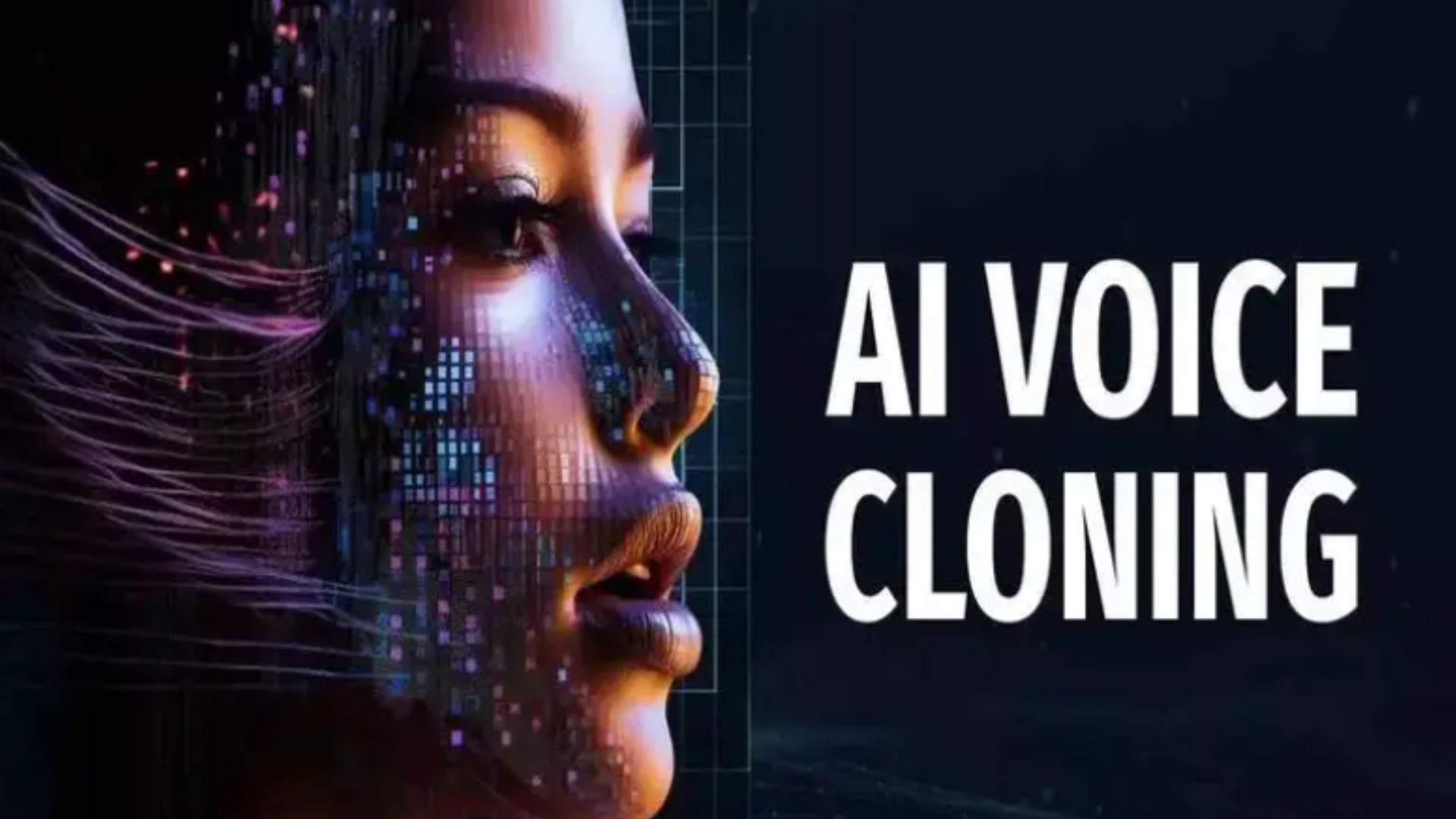Introduction: The Rise of Voice Cloning in Hollywood
You’re not alone if you lately went to the movies and felt something oddly familiar about a character’s voice—perhaps eerily so. The best AI voice cloning technologies will be front and center in Hollywood in 2025, precisely replicating voices to blur the boundaries between the digital and the live.
From bringing authenticity, nostalgia, and occasionally controversy to their work by resurrecting the legendary baritone of James Earl Jones as Darth Vader to recreating long-gone icons like Anthony Bourdain, directors are depending more and more on AI voice cloning.
But the ethical concerns get louder as this technology gets more developed. A voice belongs to who? Should companies be let to employ artificial intelligence to bring back dead celebrities? Is this invention a slippable slope or a storytelling revolution?
This paper explores the best AI voice cloning technologies now transforming the film business, their application in actual films, the companies driving the technology, the moral and legal discussions around them.
What Is AI Voice Cloning?
Fundamentally, artificial intelligence voice cloning is the application of machine learning to reproduce human speech. These systems can create a synthetic voice that remarkably faithfully reflects tone, accent, emotion, and inflection using just a few minutes—or occasionally seconds—of audio.
How Does AI Voice Cloning Work?
Voice cloning systems are trained using neural networks that analyze vocal data. Here’s a simplified breakdown:
- Voice Input: Audio recordings are fed into the system.
- Model Training: The AI models learn vocal patterns, pitch, timbre, and cadence.
- Voice Generation: Once trained, the model can produce new speech that sounds like the original speaker—saying things they may have never actually said.
With the best AI voice cloning tools, it’s nearly impossible to distinguish synthetic voices from real ones—especially with high-quality studio post-processing.
Celebrities “Resurrected” via AI Voice Cloning
Hollywood is no stranger to digital resurrection. It started with CGI recreations of faces—think Carrie Fisher in Rogue One. But now, it’s about bringing back voices. The best AI voice cloning tools are being used to simulate speech from actors who have retired, passed away, or are simply unavailable.
James Earl Jones as Darth Vader
Legendary actor James Earl Jones formally stopped voicing Darth Vader in 2022. Instead of reinterpreting the part, Lucasfilm signed a contract with Ukrainian tech company Respeecher so they might clone Jones’s legendary voice using artificial intelligence.
The result? Vader’s voice in Obi-Wan Kenobi sounds just as menacing as it did in 1977. The voice was synthetic—but authorized.
Anthony Bourdain in “Roadrunner”
In the 2021 documentary Roadrunner, filmmakers used AI voice cloning to generate a few lines of dialogue Bourdain never recorded. While the lines were based on Bourdain’s writings, the revelation that they were synthetically voiced sparked a fierce ethical debate.
Val Kilmer in “Top Gun: Maverick”
Val Kilmer’s character, Iceman, still speaks in Top Gun: Maverick after throat cancer causes him to lose his voice. That’s thanks to Sonantic, a firm focused in AI-generated voices. They mimicked Kilmer’s voice with his permission so that fans might once more hear him.
These illustrations highlight how the best AI voice cloning systems are transforming storytelling possibilities rather than only technological achievements.
The Leading AI Voice Cloning Tools in 2025
Let’s take a closer look at the most powerful and popular platforms used in modern film and TV production.
1. Descript’s Overdub
Descript’s Overdub tool is widely used in podcasting, but its capabilities make it a top contender for film editing as well.
Key Features:
- Creates ultra-realistic AI voice models.
- Edits audio by editing text.
- Requires speaker consent to clone voices, ensuring ethical use.
Used For:
- Documentaries
- ADR (Automated Dialogue Replacement)
- Quick script changes in post-production
With its ease of use and ethical safeguards, Overdub is considered one of the best AI voice cloning tools for creators who want control and consent baked in.
2. Respeecher
Respeecher is a Hollywood favorite, known for providing the voice of Darth Vader and young Luke Skywalker.
Key Features:
- High-fidelity voice cloning.
- Used in major studios including Disney and Lucasfilm.
- Capable of voice-to-voice transformation.
Used For:
- Sci-fi franchises
- Historical recreations
- Deceased actor performances
It’s no surprise Respeecher is often hailed as the best AI voice cloning platform for cinematic storytelling.
3. iSpeech
iSpeech is a scalable option that provides voice cloning for a variety of use cases, including commercials, animations, and indie films.
Key Features:
- Supports real-time voice synthesis.
- Custom voice models.
- Cloud-based deployment.
Used For:
- Animated films
- Dubbing in multiple languages
- Dynamic ad voiceovers
While not always the most cinematic, iSpeech’s flexibility earns it a spot among the best AI voice cloning tools for commercial video creators.
4. Sonantic (Now part of Spotify)
Sonantic specializes in emotional speech synthesis, meaning it doesn’t just mimic the words—but the feelings behind them.
Key Features:
- High-emotion voice modeling.
- Used by major Hollywood studios.
- Adaptive emotional tones in voice output.
Used For:
- Romantic dramas
- Character voice enhancement
- Actors with speech disabilities
In terms of expressive realism, Sonantic may be the best AI voice cloning tool available today.
Hollywood’s Growing Dependence on AI Voice Cloning
While initially used in documentaries and indie projects, AI voice cloning is now becoming standard in big-budget productions.
Why Directors Love It:
- Efficiency: No need for repeated voiceover sessions.
- Continuity: Voices can remain consistent across decades-long franchises.
- Flexibility: Adjust lines during post without re-recording.
Even voice actors are using these tools to create backups of their own voices for future licensing.
Legal and Moral Debates Around AI Voice Cloning
With great power comes great responsibility—or at least a complex web of legal and ethical dilemmas.
Legal Considerations
- Consent: Most ethical tools (like Descript and Respeecher) require explicit permission to clone voices. But enforcement isn’t always foolproof.
- Right of Publicity: In the U.S., celebrities can control how their image and voice are used—but this varies by state.
- Copyright Law: Voice is not inherently copyrighted unless it’s part of a performance. This gray area makes regulation difficult.
Ethical Concerns
- Posthumous Consent: Can a deceased actor truly consent to AI usage? Should their estate hold that right?
- Manipulation Risks: Synthetic voices could be used to make a person say something they never actually said.
- Job Displacement: Will human voice actors be replaced by machines?
While the best AI voice cloning technologies can elevate art, they also raise questions about authenticity, consent, and the very nature of human expression.
Real Opinions from the Industry
Hollywood is divided. Some believe the best AI voice cloning tools represent a creative revolution. Others fear a loss of artistic integrity.
What Actors Are Saying
- Keanu Reeves has a clause in his contract banning digital alterations to his performances without consent.
- Tom Hanks publicly acknowledged that AI may allow his voice and likeness to appear in films long after he’s gone—but he’s uneasy about it.
What Studios Are Doing
- Disney, Paramount, and Warner Bros. are developing internal AI ethics teams.
- Studios are increasingly adding clauses in contracts around voice rights and digital replication.
Conclusion: Regulate or Innovate?
There’s no denying the impact of the best AI voice cloning tools in 2025. They’re changing the way films are made, resurrecting voices we thought we’d lost, and opening new doors in storytelling. But with that comes an urgent need for regulation, transparency, and consent.
So where do we go from here?
- Regulate: Governments and industry bodies need clear, enforceable laws about how AI voice technology is used.
- Innovate Responsibly: Tech companies must prioritize consent and offer ethical usage options.
- Educate Creators: Filmmakers and actors need to understand the implications—both creative and legal.
The best AI voice cloning technology is neither good nor bad—it’s a tool. And like any tool, it’s how we use it that defines its impact.
If Hollywood can strike the right balance between innovation and ethics, the next decade of filmmaking could be its most imaginative yet. Also read AI Video editing tools in Hollywood.





